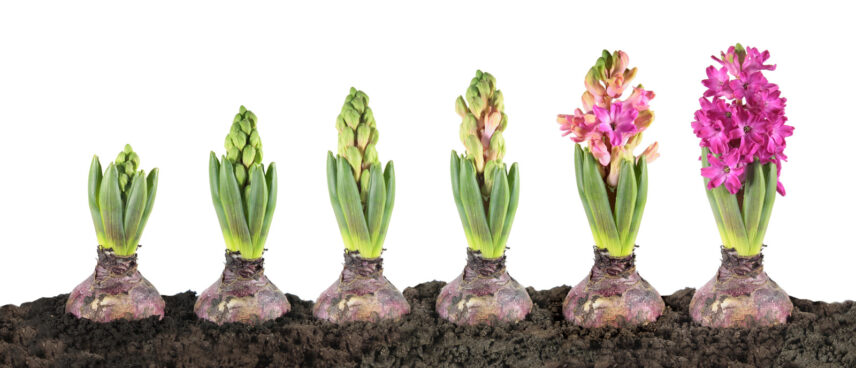
Skip to Section
- 1 The Science Behind Flower Blooming
- 2 Techniques for Capturing A Flower Blooming Time Lapse Video
- 3 Showcase: Notable Flower Blooming Time Lapses
- 4 Why Flower Blooming Time Lapses Are so Beneficial
- 5 How to Create Your Own Flower Blooming Time Lapse
- 6 Flowers with Fascinating Blooming Patterns
- 7 Make Every Blossom Count
Flower blooming might be one of nature’s most mesmerizing creations, but in real life, it can take hours or even days to fully unfold. This is where time lapse flower blooming photography steps in—condensing lengthy processes into seconds of pure magic. Imagine watching a rose gracefully unfurl its petals or a sunflower lift its head to greet the morning sun, all in stunning detail.
This post dives into the art and science of capturing flower blooming time lapse video. From the intricate biology behind blooming to the techniques and tools that make these captivating videos possible, here’s everything you need to know about exploring this incredible time lapse video.
The Science Behind Flower Blooming

The flower blooming process is more than just petals opening—it’s a delicate chain of biological events. Plants pass through stages of growth like germination, elongation, bud development, and finally, flowering. Each stage plays a critical role in ensuring the flower blooms to its full potential.
Factors That Influence Blooming Time
Several factors can affect how and when flowers bloom:
- Light Exposure: Certain flowers, such as tulips, require specific daylight conditions to bloom. Others bloom only during the night, like the evening primrose.
- Temperature: Seasonal flowers adapt to varying climates. Cooler temperatures can delay blooming, while warmth speeds it up.
- Water and Nutrients: Proper hydration and rich soil aid in healthy blooming, influencing the vibrancy and size of the flower.
Unique Blooming Patterns in Flowers
Some flowers have intriguing blooming habits:
- Cherry Blossoms bloom in quick succession, creating a stunning wave of pink and white.
- Corpse Flowers, as rare as they are large, bloom dramatically and emit a pungent scent to attract pollinators.
- Morning Glories, true to their name, unfurl as the sun rises and close by sunset.
Techniques for Capturing A Flower Blooming Time Lapse Video

Equipment Essentials
To document flower blooming, you’ll need the following:
- Camera: A DSLR or mirrorless camera with manual settings is ideal for precision.
- Tripod: Essential for preventing even the smallest shifts during hours or days of shooting.
- Timer/Intervalometer: Helps automatically capture images at set intervals without manually pressing the shutter.
Ideal Settings and Conditions
Getting the conditions right is critical for a smooth time lapse:
- Use manual focus to ensure sharpness throughout the shoot.
- Set intervals between shots based on the bloom speed (e.g., every 10-30 minutes for slower blooms).
- Choose a location with consistent lighting to prevent sudden exposure changes.
- A black background or neutral backdrop helps highlight the flower and its bloom.
Tips for Choosing the Right Flowers
Not all flowers are ideal for time lapse photography. Choose species with noticeable blooming actions like lilies, daisies, or roses. Their movement and detail add cinematic impact to time lapses.
Showcase: Notable Flower Blooming Time Lapses
There’s no better way to understand the artistry of flower blooming time lapse video than by viewing some remarkable examples:
- Louie Schwartzberg’s “Moving Art” Series: A celebrated collection highlighting flowers blooming in surreal sequences.
- The Tulip Unfolding Trilogy on YouTube showcases how delicate tulips open in unison, resembling synchronized dancers.
- Hibiscus Bloom Close-up Shots are prized for their vivid colors and precise detailing.
These videos aren’t just visually stunning—they also carry educational and emotional value, reminding us of nature’s intricate rhythms.
Why Flower Blooming Time Lapses Are so Beneficial

Stress Relief and Mindfulness
The slow yet dramatic blooming of a flower, condensed into seconds, can have therapeutic effects. Watching these time lapses has been shown to promote relaxation, mindfulness, and a sense of awe for the small wonders around us.
Educational Insights into Plant Life
Time lapses act as valuable educational tools for students and researchers alike, making the complex processes of plant biology relatable and easy to understand.
Appreciation of Nature’s Beauty
These videos magnify the intricate details often missed by the naked eye, fostering a deeper appreciation for the environment.
How to Create Your Own Flower Blooming Time Lapse

Step-by-Step Guide
Set Up Your Camera: Choose a stable, well-lit spot to minimize interference with the subject. Position your camera site properly at an angle that captures the entire flower.
Adjust Your Settings: Switch to manual mode. Set a low ISO (100-200) to reduce noise and match the shutter speed to lighting conditions.
Choose Intervals: Begin capturing at long intervals (e.g., every 20 minutes). For faster-blooming flowers, reduce this to 10 minutes.
Record Over Days: Depending on the flower, you may need patience—some blooms take days to complete.
Compile Frames: Use software like Adobe Premiere Pro or Final Cut Pro to stitch the photos into a cohesive video sequence.
Common Challenges and Solutions
Lighting Changes
- Problem: Natural light conditions shift.
- Solution: Use artificial lights or shoot in controlled environments.
Camera Stability
- Problem: Tiny vibrations ruin transition fluidity.
- Solution: Secure your tripod and avoid touching the setup during shooting.
Creative Tips to Make Your Time Lapse Stand Out
- Add dramatic music or ambient sounds to enhance emotional impact.
- Incorporate simple macro shots to highlight intricate petal details.
- Experiment with multiple angles and transitions.
Flowers with Fascinating Blooming Patterns

- Night-Blooming Cereus
Known as the “Queen of the Night,” it blooms only once a year, making it a sought-after subject.
- Snapdragons
Their bright, playful blooms open in ripples, offering a dynamic sequence.
- Sunflowers
Famous for phototropic movement, they shift toward the sun while blooming.
Each flower also carries cultural stories—did you know sunflowers symbolize adoration and loyalty, while snapdragons convey grace under pressure?
No Comments yet!